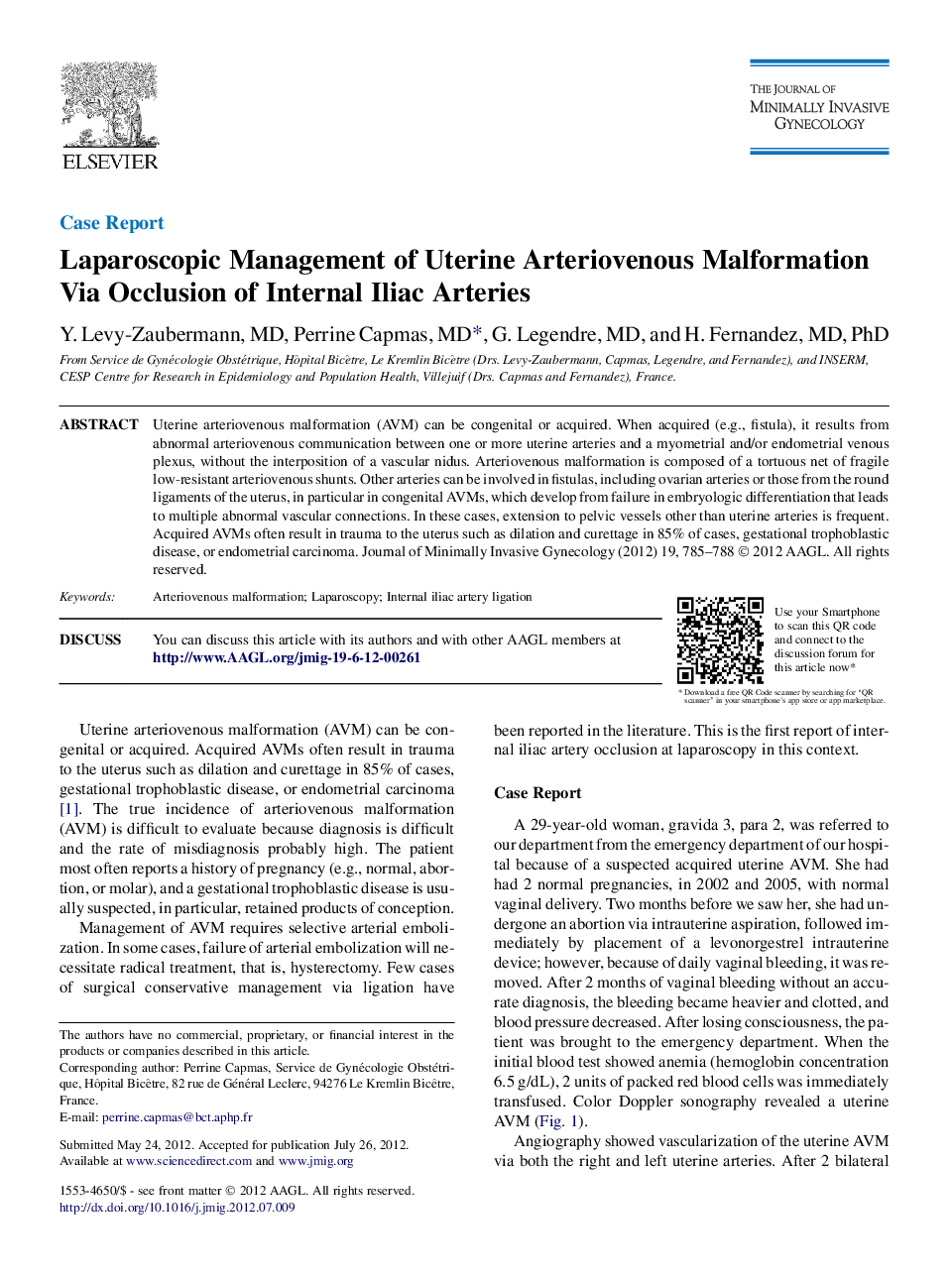| Article ID | Journal | Published Year | Pages | File Type |
|---|---|---|---|---|
| 3958538 | Journal of Minimally Invasive Gynecology | 2012 | 4 Pages |
Abstract
Uterine arteriovenous malformation (AVM) can be congenital or acquired. When acquired (e.g., fistula), it results from abnormal arteriovenous communication between one or more uterine arteries and a myometrial and/or endometrial venous plexus, without the interposition of a vascular nidus. Arteriovenous malformation is composed of a tortuous net of fragile low-resistant arteriovenous shunts. Other arteries can be involved in fistulas, including ovarian arteries or those from the round ligaments of the uterus, in particular in congenital AVMs, which develop from failure in embryologic differentiation that leads to multiple abnormal vascular connections. In these cases, extension to pelvic vessels other than uterine arteries is frequent. Acquired AVMs often result in trauma to the uterus such as dilation and curettage in 85% of cases, gestational trophoblastic disease, or endometrial carcinoma.
Related Topics
Health Sciences
Medicine and Dentistry
Obstetrics, Gynecology and Women's Health
Authors
Y. MD, Perrine MD, G. MD, H. MD, PhD,
